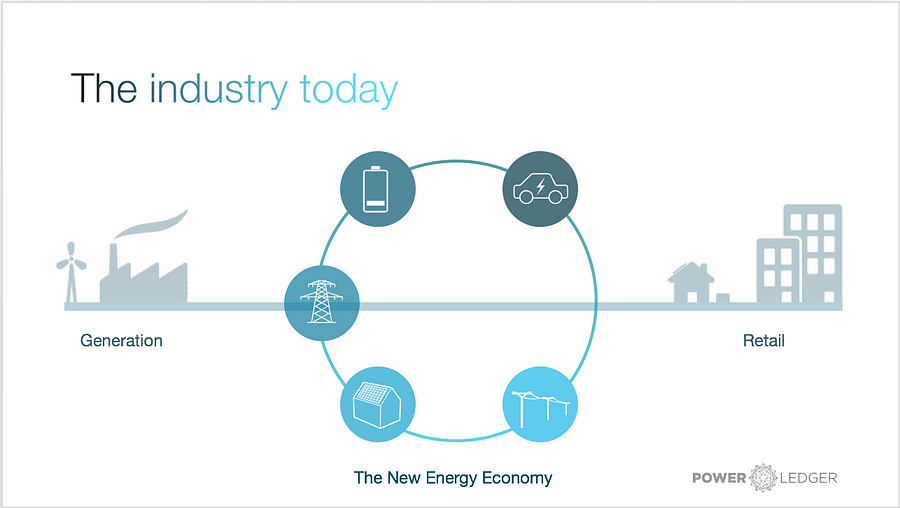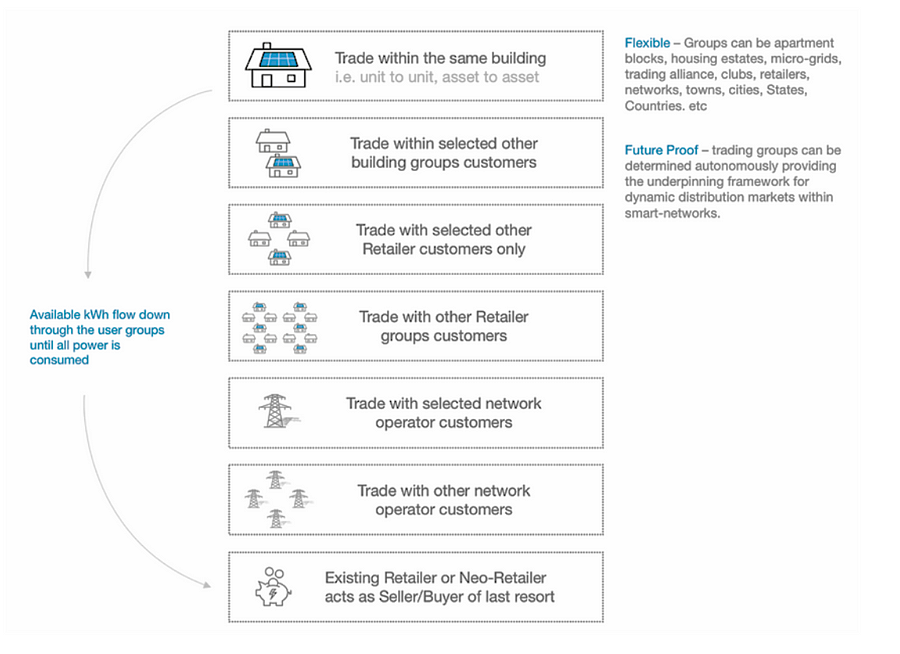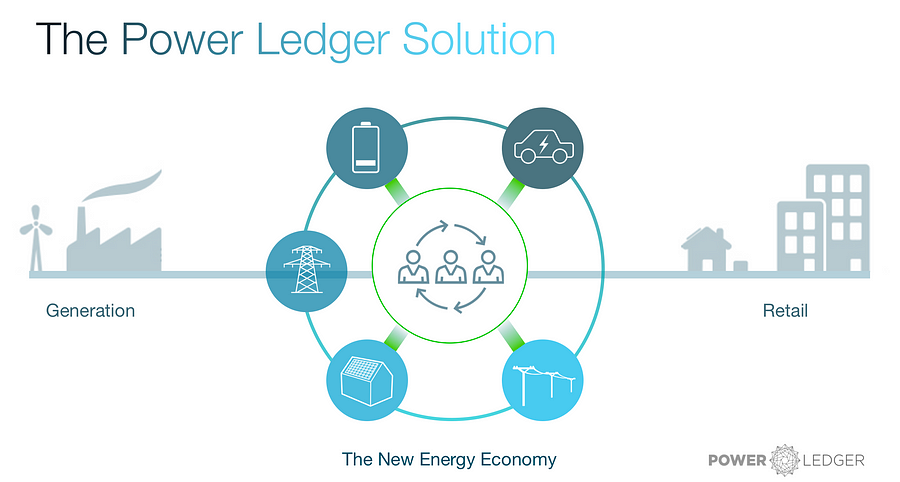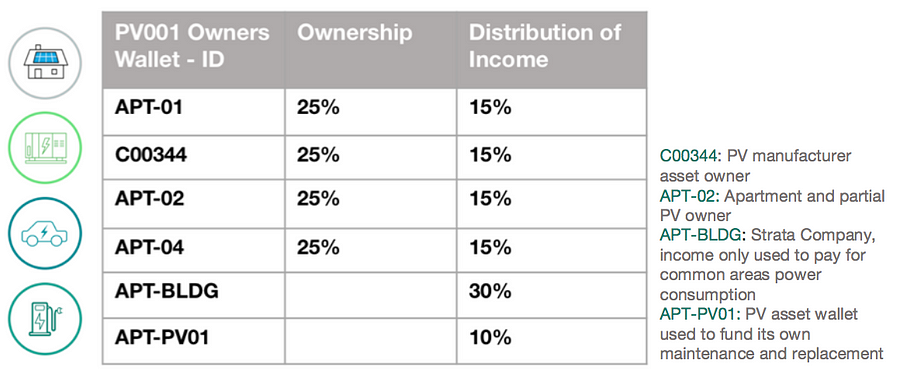
The energy industry used to be a simple animal
The vertically integrated utility is in the center of the system, like a nice spider that plays the web to the last customer looking for a connection; Decide where and when to build generator capacity, determine how to bridge the distance between the generator and the load; Maintain the balance of the system through the persistent application of all the levers available to the centralized controlling entity. It does not look like that anymore.
In Australia, in the years between 2011 and 2016, more new generating capacity is installed on the roof of the house rather than connected to the transmission network.
If AEMO's forecasts are accurate, business networks such as Western Power in WA face the prospect of divesting revenues of more than $ 110 million annually by 2025 as a result of the load demolition caused by the development of roof top and up-take PVs. Distributed energy storage. Of course, under revenue-sharing rules, the monopoly network passes these losses in form or rate increases.
But the network is no longer a monopoly. Consumers are, for reasons of cost, certainty, control and even conscience, choosing to meet their energy needs through other means including roof top PV, on-site power generation, micro networks and storage.

Power Ledger's vision
Executive Summary for Power Ledger:
The energy sector is on the brink of disturbance. Consumers around the world are becoming more and more self-sufficient in terms of energy production and storage. Community powered cities are beginning to emerge as citizens work to create a local low-carbon energy economy, shifting goals toward supply security, long-term sustainability and competitiveness.
Power Ledger will play an important role in this new energy economy, offering unprecedented customer empowerment and destroying barriers to individual participation in the energy market.
Digital technology will be an important component in embracing this major change and Power Ledger has identified blockchain technology as the most potential to adapt trading principles with ownership of distributed energy sources.
Power Ledger will provide a full-scale transactional environment in the peer-to-peer marketplace, to provide transparent, audit-capable and automated clearance and clearance mechanisms for residential and commercial businesses to decide who wants to sell their surplus energy to and How much does the system cost Tokens are required to facilitate direct trade between consumers and consumers without the entry of industrial intermediaries. For example, imagine people have extra power from their solar panels that they do not need. Peer-to-peer markets, such as Power Ledger, enable prosumers to 'sell' excess power into their local micro networks, generating tokens for every kilowatt-hour available. If, for some reason, they need more power than the solar panels they can produce, due to prolonged cloudy weather for example, they can buy back kilowatt-hours using the same token from the micro network. If they do not need to buy any renewable power, they can sell their tokens on separate exchanges to generate additional benefits from their renewable energy sources.
Where blockchain comes in, it is to provide the speed, security and transparency of the data needed to complete and reconcile millions of transactions between hundreds of thousands of traders in 5 minute trading intervals where energy is produced and consumed.
There is an uncomfortable truth facing the traditional energy supply industry, but this is the truth we must recognize in order to maintain the viability of the system and the truth is: at some stage it will be cheaper and more reliable to supply itself than Rely on networks to provide cheap energy And reliable.
This may happen in ten years, it may happen in two (according to some research for some consumers, it has already happened - (Newman & Green 2016)) but we need to accept the fact that if the sole purpose of the energy network is the provision of Energy then we put They are fighting against some fierce competition in the form of distributed energy sources.
But there are alternatives to this burgeoning obsolescence, and oddly enough, it can help retain the value of existing network assets while at the same time reducing the investment risk for those who create energy systems in the future.
Re-imagine the network as a decentralized and unsafe trading platform.
Rapid penetration of distributed energy sources means we now have a distribution system characterized by bi-directional energy currents and hundreds of thousands of active processors.
At the housing level, consumers spill energy into the network and feel less appreciated for their contribution, but a network that allows consumers to realize the value of their investments in DER presents an additional value proposition that can encourage even greater investment in distributed renewable energy and Era New network management.
This new paradigm can see an increased level of automation and resilience led by a small amount of large-scale centralized investment but by the millions of micro investments distributed throughout the system.
A network that allows consumers to sell energy to their peers in a powerless environment is a trading platform. It is a component of a distributed economy that allows consumers to realize the value of their investments in DER by letting them generate their excess energy in the same way as Uber and AirBNB allow people to generate excess capacity in the form of cars and their subscriptions. Room.
And helpless? Trading platforms that require third-party settlement and reconciliation of millions of transactions between hundreds of thousands of traders within a 15 minute trading interval are not likely to be physically supported but new technologies from blockchain can facilitate the financial settlement of tran

And it's not just network service providers that benefit from maintaining the relevance of one of our most important social assets.
The people who lose the most are the ones who have the least ability to influence their exposure to the increased cost of the network and its impact on the energy supplied by the grid. Financial and social tenants are marginalized, large numbers of Australians living in strata-title housing and even those whose homes are oriented in the wrong direction or exposed to the shelter of nearby buildings or trees are the ones who will bear the impact. From the failure of network usage if we do not find a way to give incentives to users to stick to the network.
In contrast to centrally managed power systems in the past, the future of energy systems, will be created jointly by prosumers and investors who will determine where and when to install DER.
Power Ledger is already working with a number of property developers who want to implement a new development model that combines community-owned energy generation and storage into urban residential and commercial development (green fields and content sites) to create similar developments. There is no impact on peak demand and is funded by consumers.
This development does not require network enlargement, so it is cheaper to develop, but may still have energy requirements (off-peak charging or storage devices) that benefit the network by increasing asset utilization.
As an industry, we have no choice but to participate actively in the transition to a distributed energy economy where the grid becomes a vehicle that provides economic incentives for consumers and consumers to realize their own low-carbon and low-carbon and tough future.

At Power Ledger, we just released a White Paper on how blockchain-based trading ecosystems can become a unifying element that allows multiple hosted applications to create trading applications that allow consumers to recreate their energy future and continue to build it. The value of social assets is very important - the grid.
ROAD MAP

With our immediate Token Generation Event opening, we want to make sure that everyone thinking of participating is aware of what it needs and, more importantly, what will happen next. At Token Generation Event, POWR token will be sold, this unique token of ERC20 allows ecosystem participants and Application Hosts to access and use the Power Ledger platform. We've made it very easy to buy our tokens by accepting both digital and digital currencies.
After Generate Token Events, the POWR token may be listed on the primary exchange site, adding to the transparency and liquidity of the asset. The beta testing of various platform applications will begin, starting with the Operator / Strata Application and the Microgrid / Embedded Electric Vehicle. Furthermore, users will also have the opportunity to take advantage of our Green Gift Giving Loyalty Program. The goal of the program is to thank users for engaging in our platform and sharing our vision, while providing more reasons to consume and generate renewable energy.
In early 2018, Pool Ledger Growth Pool distribution will begin, with the aim being to facilitate the rapid growth of the platform's user base. Application Hosts that join our ecosystem early will get a token from Growth Pool to show that we value their initial contribution and want them to survive to contribute in the future. During this period, we will also complete our transition into a modified and unfocused Ethwellum consortium network. Through the use of this customized blockchain, this platform will be able to follow the user's peer-to-peer transactional requirements and the energy costs have to drop dramatically.
In the latter part of 2018, more of our planned ecosystem apps will undergo beta testing - this time the Automated Management and Neo-Reseller Applications. Other apps will start to use and the Application Host will be targeted to onboard more participants. We can also directly deploy our own applications. The First Asset Freezing Event will take place around this time, in which we will allow individuals and communities to become joint owners and beneficiaries of our renewable assets that we have purchased, with POWR token holders having priority. Further development and testing for Carbon Trade, Completion of Wholesale Markets and Distributed Market Management Applications will be carried out later.

N 2019, we plan to hold regular additional asset breeding events, which will give POWR more value and support. PowerPort and other applications will also be in development, and we will do all we can to achieve our goals fully operational on the public evidence evidence block. Later, PowerPort applications and other applications created at this time will undergo beta testing.
We are very excited to continue our journey and hope you will also join us.
Video Power Ledger Presentation
Details Information:
Website: https://tge.powerledger.io/
Facebook: https://www.facebook.com/powerledger
Twitter: https://twitter.com/PowerLedger_io
Telegram: https://t.me/joinchat/Gop-90DIMiPF7N_EtvFzjA
Slack: https://slack.powerledger.io/
Author Arumi.Bilqis : https://bitcointalk.org/index.php?action=profile;u=965668


Tidak ada komentar:
Posting Komentar